 |
| Sala Borsa |
From Sala Borsa we entered the gorgeous basilica which sports a two-tiered facade, the dichotomy easily the first thing you notice about the building! Despite spending over 250 years building the basilica, the facade was never completed!
The interior of the basilica was beautiful red and white stone arching up the central nave and side aisles, reminiscent of the basilica in Vercelli. After being scolded for naively trying to take a picture of the architecture (silly me!) I paid two whole euros to be given a bright pink theme park bracelet for my camera and the all-empowering ability to document my visit into the building...
The basilica had many beautiful frescoes, culminating in the gorgeous Chapel of the Magi.
 |
| This man looks suspicious |
Naturally we had to purchase entry into this chapel and even five euros poorer we could not take pictures so I sneakily hid behind a column and flouted my disregard for authority.
 |
| This is a great Hell scene! |
Finishing up our visit we passed by some intricately wrought wooden choir seats which reminded me of the choir seats from Vercelli!
The basilica is bisected by a roped off line on its floor. Walking closer I found that it is a solar clock created in 1695 by the astronomer Giovanni Domenico Cassini.
 |
| Meridian Line |
Leaving the basilica we visited one of the University buildings. The Palazzo dell'Archiginnasio became the first permanent seat of the University of Bologna in 1562 and was home to higher learning for over 240 years! Now it houses the city's library and the Anatomical theater where anatomy lessons were once held. Thomas Becket even studied at the University of Bologna under Gratian in the 12th century.
 |
| Courtyard in the palazzo |
The Anatomical theater was incredible! The room was built in 1637 for anatomy lectures and is entirely covered in rich warm-toned wood. The intricately carved ceiling shows human bodies in all of their muscular glory. The room is actually quite small and is entirely ringed by wooden benches exactly like a tiny theater. In the center rests a marble dais where dissections and lectures would take place.
 |
| Chad! Act like you're studying! |
The lecturer's chair was the gem of the room. It sits between two "skinless" statues carved by Silvestro Giannotti and Ercole Lelli in 1734.
There was a small exhibition about the first woman to earn a chair at the University of Bologna. Laura Maria Caterina Bassi was an Italian physicist and academic recognized as the first woman in the world to earn a university chair in a scientific field of studies. She received her doctoral degree from the University of Bologna in 1732.
The whole Palazzo dell'Archiginnasio is richly decorated in memorials, monuments and coats-of-arms dedicated to its professors and students. In the 19th century the building became the home to the city library and now holds about 800,000 books, 2,500 incunabula (a printed book before 1501), 15,000 16th century books, 12,000 manuscripts, 50,000 letters and 15,000 drawings making it the "most" important library in Italy!
 |
| Memorials and coats-of-arms cover all the walls! |
 |
| Zoology |
 |
| Very old books! |
 |
| 16th century books |
 |
| Rooms and rooms of books! |
Leaving the University, Chad and I walked through the old city market, the Quadrilatero. This is a section of the city with narrow winding streets filled with food stalls selling fresh seafood, fruits and veggies, pastas, meats, dairy products and spices. We had worked up an appetite by this time so we perused the stalls until we found one that sold sandwiches and we purchased some, enjoying them while we walked through the crowded and lively market streets.
 |
| Fresh fish from the Adriatic Sea |
From the Quadrilatero we walked to the Piazza Santo Stefano, this was a quaint and beautiful piazza ringed with porticoes and surrounded with life. A man sat at one end of the piazza playing a guitar and singing. We visited the church at the other end of the piazza only to find that it is a complex of seven churches!!
The oldest of these churches dates back to the 5th century and houses the remains of St. Petronius. Chad and I entered the complex and explored the different sections of the complex. It was very interesting and the different sections were often clearly delineated by styles and courtyards.
The time frame of the different building projects on the complex.
 |
| The oldest section of the complex was the 5th century octagonal Church of the Holy Sepulcher |
 |
| The tiny Church of Vitale and Agricola from the 4th century, rebuilt in the 12th century |
 |
| Courtyard of Pilate, 13th century |
 |
| Church of the Trinity, 13th century |
 |
| Cloister |
After leaving the "Seven Churches" Chad and I visited the Bologna History Museum which was highly recommended. While it was interesting, we quickly tired out and were running out of time, so we made a brief tour of the new University District, populated with loud youth and loud graffiti. On the edge of the University district the two towers (no not those two towers ;) ) rose up from a circular piazza. There were tons of people milling around and relaxing, sitting on the steps of the arcades. We tried to get a picture that showed how crooked one of the towers was but all of our attempts were thwarted.
|
|
The best I could do with the space given to me
|
Finally, evening quickly approaching, we ran back to the hostel, grabbed our bags and headed out to the Osteria D'Orsa for dinner. We kissed Bologna goodbye over a plate of tagliatelle and ragu and ravioli with sausage and two plates of steak with fries! One of the best meals we had had at that point. We walked back to the train station in the encroaching darkness and met our Blablacar driver for the short drive to Ravenna.
 |
| SOOOOOOOO GOOD! |
 |
| Oops mine was steak, Chad's was pork... |
Our Blablacar driver was Giovanni, a lawyer who lived in a town south of Ravenna. We had an incredible discussion during the ride about politics between Italy and America. While I got lots of practice translating between Chad and Giovanni, I was left mentally exhausted by the end of the hour long ride and ready to fall into my bed at the hostel in Ravenna.
Ever since studying the 6th century mosaics in the Basilica di San Vitale in college I have wanted to see the gorgeous mosaics of Ravenna in person. From the 5-8th century, Ravenna was the capital of the Western Roman Empire. Many of Ravenna's treasures date from this period and the town is a showcase for early Medieval mosaics.
Since Chad and I only had a day to spend in this beautiful city, we went on something of a whistle-stop tour of all the most important sights. This tour started with the Church of San Francesco.
The church San Francesco was built between the 9th and 10th centuries and sits on the site of a 5th century religious building. The church is famous because in 1321 the funeral of Dante Alighieri was celebrated within its walls.
The underground crypt is all that remains of the 5th century building. It is filled with a foot or so of clear water through which you can see a beautiful stone floor mosaic and a small school of gold fish.
Since Ravenna is so renowned for its beautiful mosaics, everything is embellished with colored glass mosaic- including its street signs! These varied from street to street, each sporting a picture or design surrounding the name of a famous Italian.
From the Piazza del Poppolo, Chad and I headed to the Ravenna Duomo. We didn't visit the actual Duomo as it had been entirely reconstructed in the 18th century and didn't really appeal to my interests.
 |
| The Duomo and bell tower |
In the shadow of the 18th century Duomo, which was built atop the 5th century Ursiana Basilica, is the Neonian Baptistry. This building is probably the most ancient monument in Ravenna. It is built over an old Roman bath and it's entire octagonal surface is covered in Hellenic-Roman style mosaics and marble. These mosaics were completed in the 5th century and directly above the baptismal font in the center is a mosaic of Christ's baptism surrounded by the twelve apostles.
 |
| The ceiling |
 |
| John the Baptist is centered with Jesus and the personification of the Jordan River floats to the right |
 |
| Marble baptismal font |
 |
| They used so much gold in the mosaics that the inside of the building practically sparkled with light! |
Next we visited the Archiepiscopal Palace in which rests the gorgeously decorated Chapel of St. Andrew. We were not allowed to take pictures of the beautiful chapel but in a moment of distraction, the guard left me with just enough time to break the rules hehehe
 |
| The entrance into the chapel is decorated with hundreds of species of glittering birds-- unfortunately I couldn't get a picture of it though! |
From the museum we walked down Via Baccarini and ducked into the Museum of Mosaic Art. This museum was hosted in the Church of San Nicolò.
There were many examples of stone mosaics spanning from Roman to modern times.
 |
| Courtly love |
 |
| Soldiers |
 |
| The Siege of Constantinople |
 |
| Taming the Unicorn |
 |
| Modern mosaic |
I made sure to stop by the tomb of Dante. I read the Divine Comedy in college and though I knew much of Dante I had forgotten he had died in Ravenna. So when I came to Ravenna it was a complete surprise to find that I could visit his tomb!
 |
| Dante is buried under this knoll |
 |
| Monument to Dante Alighieri |
Next we walked towards the train station and stopped at the Basilica di San Apollinare Nuovo. This large basilica was built in the 6th century.
Inside the walls are graced with twenty-six scenes from the New Testament making it one of the largest monumental cycles from the Theodoric era and the oldest mosaic work of the New Testament ever!!
The mosaic scenes were beautifully rendered, full of details and colors! There was so much gold that the whole thing glittered in the light from the windows. Pictures can't do this justice!
 |
| Raising of Lazarus |
 |
| The Last Supper |
Next we traversed the historical center of Ravenna to enter the Basilica di San Vitale! The outside of this monument is entirely encased in red brick, concealing the glory inside. The basilica was built in 548 AD and shows a heavy Eastern influence in its architecture and mosaics. Inside the basilica is an octagonal plan underneath a large cupola.
Everyone inside the building surrounded the apse of the building, easily distinguished by the gorgeous mosaic decorations covering the entire section.
Again, I don't think these pictures do the real monument justice but you can still glimpse the extraordinary magnitude of the decorations. So much color and minute detail. The Saints with little rosy cheeks. The intricately wrought faces and hands and feet. The designs that cover every open space between the Christian scenes. It was extraordinary!
 |
| Cain and Abel |
 |
| The Emperor Justinian |
 |
| Moses |
 |
| The apostles |
 |
| Abraham sacrificing Isaac |
 |
| The Empress Theodora |
Just outside the basilica is the small Mausoleum di Galla Placidia. The petite brick building was built in the 5th century for Galla Placidia, the sister of Emperor Honorius but she never used it since she was instead buried in Rome. Though the outside looks plain, the inside is covered in mosaics mirroring the starry sky. The lighting was quite dark so most of my pictures, again, do not do the mosaics justice!
 |
| Entrance mosaic |
 |
| Glittering gold designs |
 |
| A starry sky! |
Our last stop was the museum of the Domus dei Tappeti di Pietra (house of stone carpets) located under the 18th century church of Santa Eufemia. This house consists of fourteen rooms and three courtyards covered in mosaic dating from the mid-6th century.
 |
Original floor mosaic, the "Good Shepherd" dating from the late 4th century AD
|
 |
| Damage done to the mosaics |
This house went on and on, spreading out with different designs in each room.
Especially beautiful was the mosaic of the "Dance of the Four Seasons"!



We had another Blablacar planned late that afternoon to drive us to a campsite just outside of Venice. This ride was not quite as enjoyable and the man was a bit argumentative and cranky and I had to sit in the front of the car and listen to him be cranky... But we arrived at the campsite just before eight in the evening and rented out a little chalet for three nights. I use the term "chalet" very loosely in this case. While it was indeed a enclosed space so we did not have to camp in the cold and wet autumn weather, it was also very similar to a garden shed. Four thin wood walls enclosed two small mattresses and a tiny heater in a room through which the light of the outside filtered in from the cracks in the corners and around the door. It worked great for us for the three nights we stayed there though it was very cold at night and if we were picky at all it would have been a bit too "rugged" I'm sure.
Luckily I had picked a campsite where the bus to the city of Venice stopped just outside. There was also a supermarket across the street where we bought food for most of our breakfasts and lunches. The first day I signed Chad and I up for the Free Venice Walking Tour that I found on TripAdvisor. This was an amazing experience! Our tour guide was a young woman named Shannon who grew up in New England! She had fallen in love with Venice after visiting it and never left!
Shannon was a funny and engaging tour guide with a flippant yet likable way of describing "underground Venice". And I mean "underground" in the sense that it is less well-known and touristy, not seedy! We started the tour in the northern portion of the city in Campiello Wildmann. While we walked through the relatively uncrowded northern islands, Shannon described some of the interesting history and places of Venice.
The Island of San Michele had an interesting history. It was home to a monastery and later a prison before the people of Venice decided that burial on their main islands was unsanitary (particularly with so many floods!) and the island was designated as the Venetian cemetery. Shannon said that the island was actually a very beautiful and peaceful place to walk and she suggested stopping for a stroll on the ferry ride to the outlying islands of Murano and Burano if we were doing that. She did note that the cemetery faced the hospital and she thought it was ironic that for many people, their last views out the window would be looking at their burial place!
 |
| Island of San Michele |
 |
| The facade of the general hospital in Venice- there is a red carpet too! |
 |
| Jesuit church |
Since Venice is an island city the problem of fresh drinking water has always been predominant. Over the centuries Venice has built cisterns for rain water collection in all of its neighborhoods. At one point there were over 300 cisterns in Venice! These would be located in little campi (none of the squares in Venice are big enough to be called 'piazza' except for the main square in from of the Duomo di San Marco) located in neighborhoods or, if the family was rich enough, inside their private courtyards. Around these cisterns would be stones in which holes were drilled to filter the water. Since this source of fresh water was so precious and mercurial, all the public cisterns were protected with a grate that only a certain public official with the keys could open so as to prevent contamination or poisoning of the water! In modern times Venice gets it's water from the mainland so its cisterns have been relegated to symbolic purposes and there are only about a hundred left.

Throughout Venice you'll see a symbol of a lion with wings holding a book that is either open or closed. According to Shannon, and told in her glib manner, a medieval Venice looked around at all of its contemporaries like Florence and Siena, and noticed that all the important cities had their own patron saint with relics on display. Desiring their own patron, the Venetians chose St. Mark for an obscure legend that recounted when St Mark had been shipwrecked off the coast of Venice. After praying for safety, God came to St. Mark and told him he would not die that day but his body would come to rest in this land after his death. Grabbing this legend by its wispy and nebulous neck and with their ambitious pride in hand, two Venetian merchants sailed to Alexandria to steal the relics of St. Mark. After successfully grabbing the relics and stowing them away on their ship, the merchants had to solve the problem of getting through the customs in Egypt. They resourcefully solved this quandary by burying the relics in pork so that the Muslim guards would not investigate too closely. Returning to Venice in all their enterprising glory, Venice wholeheartedly welcomed the merchants back and chose to believe that St. Mark wanted to come to Venice since he had allowed his earthly remains to arrive in the city safely. Ever since, the symbol of Venice has been St. Mark's winged lion!
 |
| When shown with a open book the symbol was built during a time of peace, if the book is closed the symbol was built in times of war-- needless to say there are not many with closed books! |
Shannon stopped at one of the hundreds of Venetian bridges to show us a long graffiti note from a very excited Venetian man who wanted everyone to to know that the winter of 1864 was a very rare occurrence... Snow fell on Venice and it got so cold that the canals froze over enough that people could walk on them!
Shannon explained that there are two executioners houses in Venice. Apparently these houses are tall and are the only buildings that stand completely alone. Since Venice is a floating city that sits atop many islands, building space is very difficult to come by. Because of this all the houses and buildings are attached to each other and the two executioners houses are unique in that they stand alone. This is because it was bad luck to live too close to an executioner... for obvious reasons I think.
 |
| Both of these executioners houses were marked by the testa- the head |
Speaking of the islands that Venice sit atop. I know that everyone reading this has heard that Venice is sinking. This is apparently due to rising seas levels and not the actual weight of the city pushing down and sinking the marshy land of the islands. This is because during Medieval times when Venice was getting quite large they realized that they needed more stable foundations then the marshy and swampy islands. So the Venetians stacked long wooden beams in a cross-hatch pattern then built on top of the wood. This worked remarkably well and the lack of oxygen available to the wooden foundations prevents them from rotting and to this day they remain a very stable foundation for the city of Venice!

One of the last stops on our tour with Shannon was to this pharmacy. Apparently this is one of the oldest pharmacies in Venice and is famous for a particular potion they would create for copious maladies that afflicted the medieval passerby. There is still a divot in the stone floor next to the doorway where they would grind the ingredients. Shannon noted that some of the ingredients in this miracle potion were mercury, mandrake root, unicorn horn and belladonna-- all very dangerous and/or fictitious ingredients... hmmmm
 |
| At the end of our tour Shannon gave us a list of the best spots to check out for different types of activities! |
Our next stop was the famous gondola bookstore Alta Aqua Libreria. This store was amazing!! Stacked walls filled with books frame a Venetian gondola that rests in the center of the shop weighed down with mounds of new and used books.
In the courtyard attached to the shop they had placed a stairway of books that allowed the visitor to peak up above the wall at the busy canals below!
The store even had a door that opened directly onto the canal at water level that promised flooding in inclement weather!
Leaving Shannon and the Free Venice Walking Tour, Chad and I ambled into the San Marco district and briefly visited the Piazza di San Marco. This is Venice's busiest and most touristy area and we quickly decided that we needed to leave this deluge of humanity and never return...
 |
| San Marco Basilica |
 |
| Rialto Bridge |
Venice is such a beautiful area. The colors and textures of the buildings contrast beautifully with the smooth grey green of the lagoon waters.
My favorite pastime for the entire section Chad walked with me was taking pictures of him interacting with the feline wildlife. While I am a self-proclaimed crazy cat lady, Chad has dubious feelings for the furry creatures.
 |
| I'm uncomfortable... |
We found our way to the lower Dorsoduro district of Venice and stopped at a cicchetti restaurant. Shannon waxed lyrical on the Venetian version of "tapas" which is a crostini topped with hundreds of variations of toppings. This is a very popular "hanging-out" treat that Venetians traditionally eat with a Spritz-- a cheeto-orange drink ubiquitous in the hands of young Venetians at their leisure.
 |
| There was a gondola boatyard across the canal from our cicchetti shop |
So many options! The more you buy the cheaper each one is so Chad and I ordered about fifteen for our dinner equaling 20 euros!
 |
| Cicchetti and Spritz! |
 |
| Yummy! |
 |
We walked along the edge of the city up the southern tip of Dorsoduro looking out at the island of Giudecca further south. The salty and windy sea breeze was much stronger here and there was hardly any people out. We saw a HUGE cruise ship pass by in ominous portent of the crowds for the next day!
|
|
| Cruise ship is larger than the church! |
After watching the sun set behind the clouds Chad and I proceeded to enjoy a night walk through the city. The lights in Venice sparkle at night, bouncing off the calmer canal waters, and with the lessened crowds this experience was truly enjoyable.

 |
| Venice at night is perfect for a wedding photo |
San Marco's square was definitely less crowded and filled with the ubiquitous hawkers shooting glowing slingshots in the air strategically landing them close to tourists. Though it was definitely less busy and colder, the San Marco district was still not our favorite.
 |
| The intrepid explorer fearlessly leads her boyfriend to safety |
The next day we also spent in Venice. We spent the morning walking around the city and stopped at a cafe for coffee and to enjoy some relaxing reading... well I read and Chad walked around taking pictures.
 |
| This is the oldest unaltered bridge in Venice! It leads to a private home. |
 |
| Latte macchiato for me |
 |
| Espresso for Chad |
 |
| Fresh fried shrimp tapas |
Chad and I joined another tour because we really wanted to learn about the Jewish ghetto in Venice.
 |
| High water level! |
Chad is a closet photographer! He's never mentioned liking photography until we got to Venice and since coming here he's been thankfully taking over the picture-taking. I've used lots of his pictures in my blog and they are so gorgeous!



The Jewish Ghetto was very interesting. During the 16th century the Jews were banned from many countries, seeing the profit to be made, the Venetians allowed the Jews to live in their city within a small controlled area. This was the first ghetto, originating in 1516 and the Jewish were happy to create their own separate community. There soon came to be so many Jews that Venice added a second ghetto to the Jewish community. The population of Jews outgrew even this and they soon required more rooms and floors in the buildings. It is very apparent when looking at the buildings in the Jewish Ghetto that there are too many windows and they are very close together-- in a three floor house you could see the windows of six floors! At its height there were thousands of Jews living in this small campo!
|
 |
| So many floors! |
 |
| One of the many different synagogues - there was one for every language that was spoken in the Ghetto |
There was also a very moving monument dedicated to the Kristallnacht in Venice. It feature metal sculptures with various scenes from the Second Reich.
 |
| Loading the Jews onto trains |
 |
| Atrocities of war |
Throughout Venice you can see small metal memorials at the foot of many doorways with names and dates-- these are the names, ages and dates of the Jews that were taken from those buildings.
 |
The Jewish Ghetto
After leaving the Ghetto we were planning on taking a ferry to the outlying Murano and Burano islands but soon found they were too expensive for our budget. Next time we will!
 |
 |
| A parody of the fate of Venice |
 |
| The Grande Canal |
 |
| Always petting the cats! |
That night, our last one in Venice, Chad and I sat on a sculpture in the middle of a busy campo reading, drinking and enjoying a street performer sing. It was a very pleasant evening and a great end to our trip in Venice.
 |
| Youth reading too! |
The next day was our last destination during this hiatus from our pilgrimage. I wanted to visit the city of Padua and see the frescoes by the famous artist Giotto in the Scrovengi Chapel. Padua was so close to Venice that Chad and I ended up staying at the campsite for another night and taking a train to Padua which was definitely the cheaper option.
Padua is a beautiful city! It claims to be the oldest northern Italian city after legend states that a Trojan prince relocated his people here after the Trojan War. We had to make an appointment to visit the Scrovengi Chapel since they only allow a few people in the building at a time so while we waited we walked around the historical center before popping into a cafe.
 |
| Palazzo della Ragione |
 |
| There was a market where we perused until rain drove us inside |
 |
| The Duomo and baptistery |
 |
| Some of Chad's beautiful photography |
On our way to the Scrovengi Chapel that rests just outside the historical center, we stopped at the Church of Eremitani. This church, while not looking like much from the outside, contains gorgeous frescoes and was built in 1276. The apse of the church was entirely covered with frescoes until the Allies bombed the building in WWII because it sat just next to the German headquarters!
Most of the frescoes were reassembled and restored but the damage is still readily apparent.
For some of the worst damaged of the frescoes it is truly amazing that they were able to restore them as much as they did. Some of these scenes had only little tiny pieces of frescoed wall that art historians and restorers painstakingly positioned back into the original composition.
 |
| Some of these pieces are tiny! |
Finally it was time for our visit into the chapel. Our meeting time was at seven in the evening so the sun had set hours before and we made our way to the chapel in the dark.
Only twenty-five people are allowed in the chapel at one time and they are only allowed fifteen minutes to bask in the glory of the frescoes. We knew they meant business when they showed us to a metal and glass waiting room where we all had to sit for fifteen minutes while our air (and probably our bodies as well) was decontaminated. The "microclimate" in the chapel is very carefully monitored to keep the frescoes as safe as possible.
 |
| Our cosy waiting room |
The wait was worth it! After fifteen minutes we all got up and walked up a ramp through a set of metal doors and then we were in the most beautiful space! It was fully bathed in light so that we could see every detail of the walls and ceiling encasing us.
The chapel was completed in 1305 for the rich Padua banker Enrico Scrovengi. He had spent his life in luxury and sin and was accused of one of the cardinal sins: usury. To assuage his guilt and help his aging soul along its path of Purgatory, Enrico commissioned this beautiful chapel hoping it would ease the weight of his earthly sins. Alas, he is still known for his usury but now we have this beautiful monument to look at!
 |
| The Last Judgment |
Enrico commissioned the famous Florentine painter, Giotto, to complete the project. Giotto, at this time in his late 30s, spent two years suffusing the chapel in ultramarine, red ochre, yellow ochre, umber and malachite pigments.
The cycle recounts the story of salvation, starting in tiers from the top. It starts with God entrusting the message of the reconciliation to the Archangel Gabriel. The narrative continues through the stories of Anne and the Virgin Mary and then the birth, life and death of Jesus.
 |
| Massacre of Innocents |
 |
| Adulation of the Magi |
 |
| Baptism of Christ |
 |
| The Last Supper |
 |
| Judas' Kiss |
 |
| Lamentation |
 |
| The Ascension |
Interspersed in this salvation narrative are personifications of the cardinal virtues and sins. I thoroughly enjoyed these, especially the sins!
 |
| Hope |
 |
| Industry |
 |
| Prudence |
 |
| Fortitude |
 |
| Infidelity |
 |
| Despair |
 |
| Envy |
 |
| Wrath |
The back wall features the gorgeous rendition of the Last Judgment. Christ in judgment sits in a ring of angels in the center of the scene. To his sides sit the apostles enthroned. To Christ's right are the saved and following the fires of hell to his left you can see the damned.
 |
| Here Enrico is donating his beautiful chapel to Heaven out of the goodness of his heart... or the fear of justice... |
 |
| Hell scenes are the absolute best! So imaginative and descriptive! |
 |
| No one is saved from the fires of Hell- there is a Pope blessing a damned man for indulgences as he's being carried off by a demon. |
 |
| Satan sitting atop the souls of the damned |
 |
| The sin of lust- pictured here with a prostitute being paid for her services |
The Scrovengi Chapel was an amazing experience and such a delight to witness after studying Giotto's masterpiece in college. After leaving Padua we spent our last night in the little chalet-shed in outer Venice before taking a Blablacar back to Piacenza the next morning.
The next day we continued our pilgrimage walking towards the Appennine Mountains and finally (finally!) leaving the rice paddies!
Until next time!

























































































































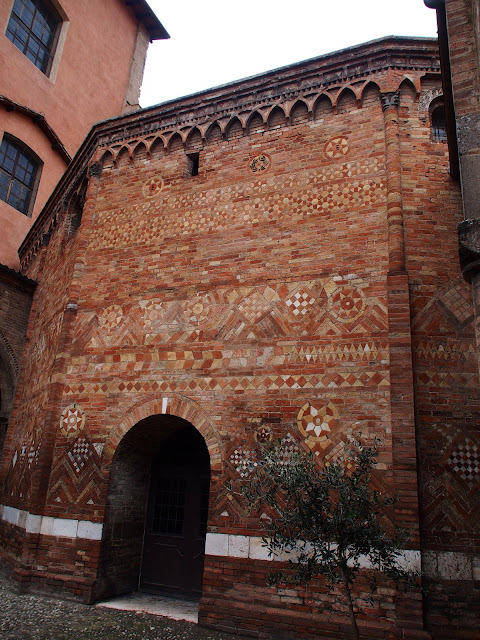










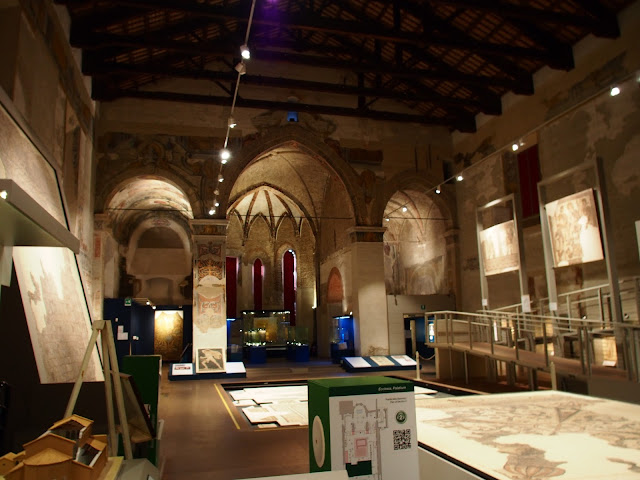






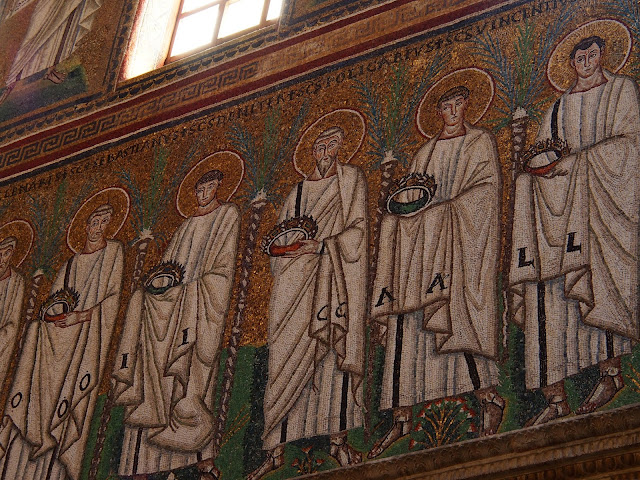

























































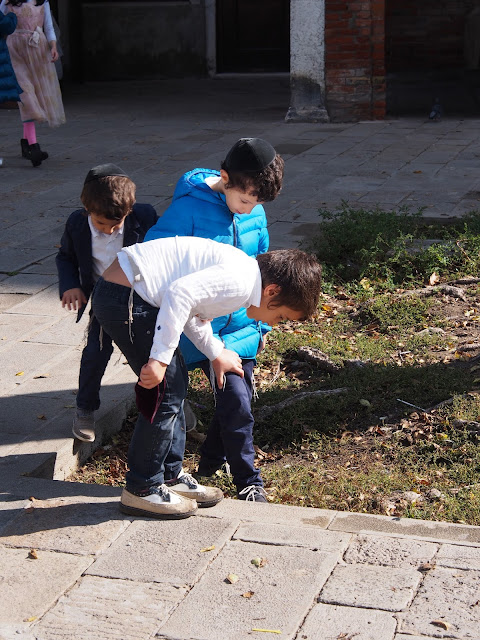
















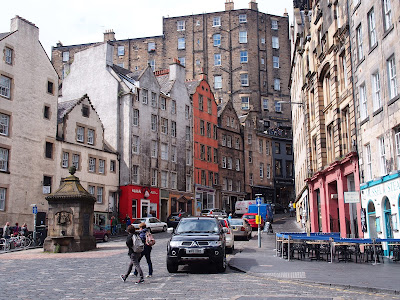
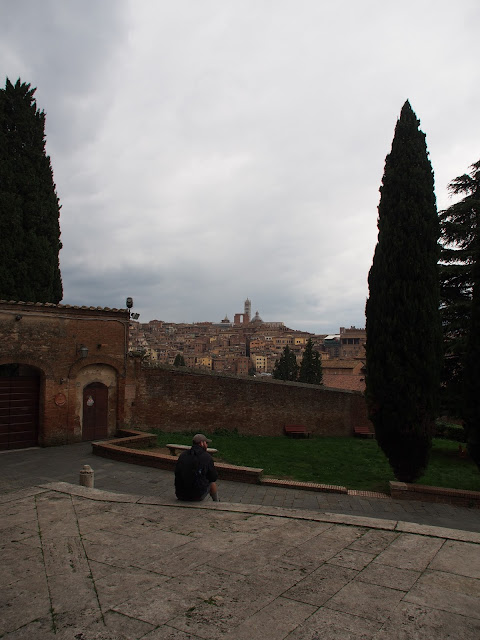

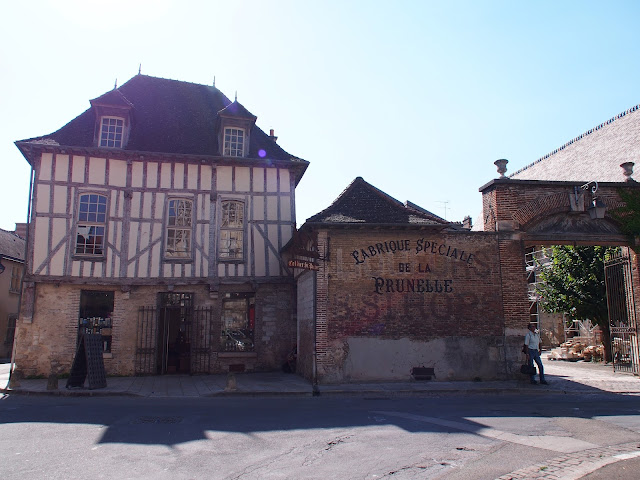




Wow Devon!! We have been to Venice twice, once as poor college students and the last time a few years ago, but have never experienced it the way you and Chad have!! Next time we may need to hire you as our travel guide!!
ReplyDelete